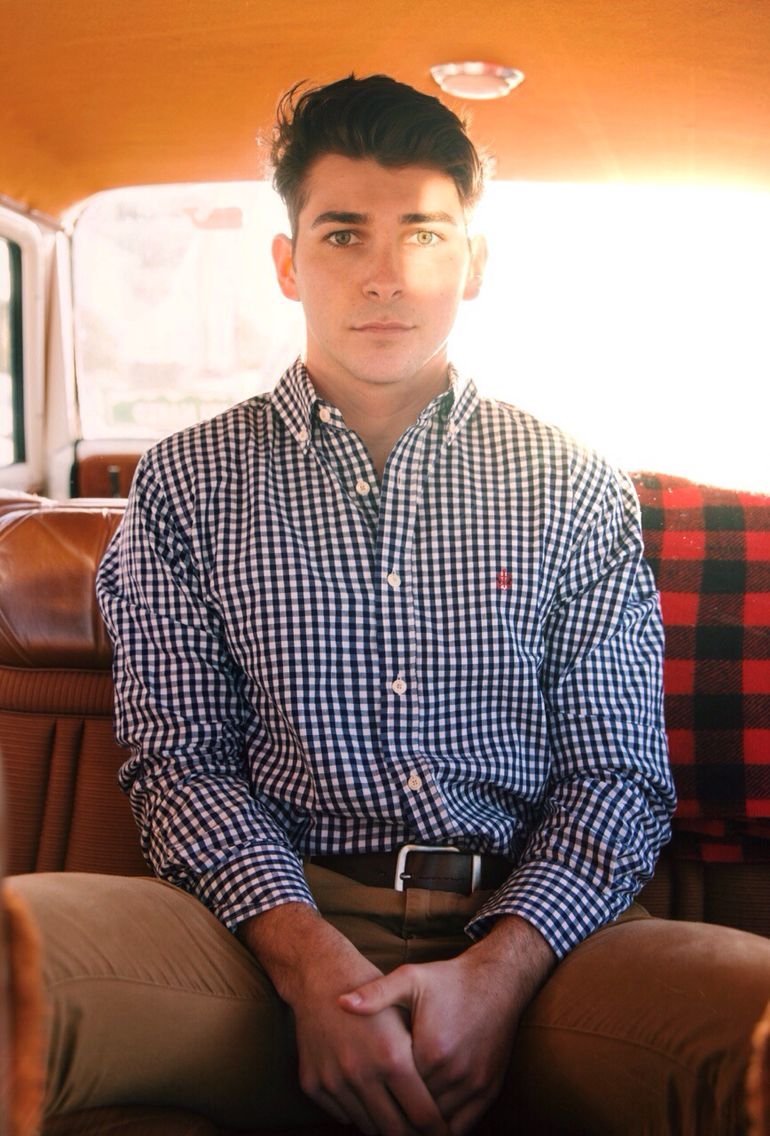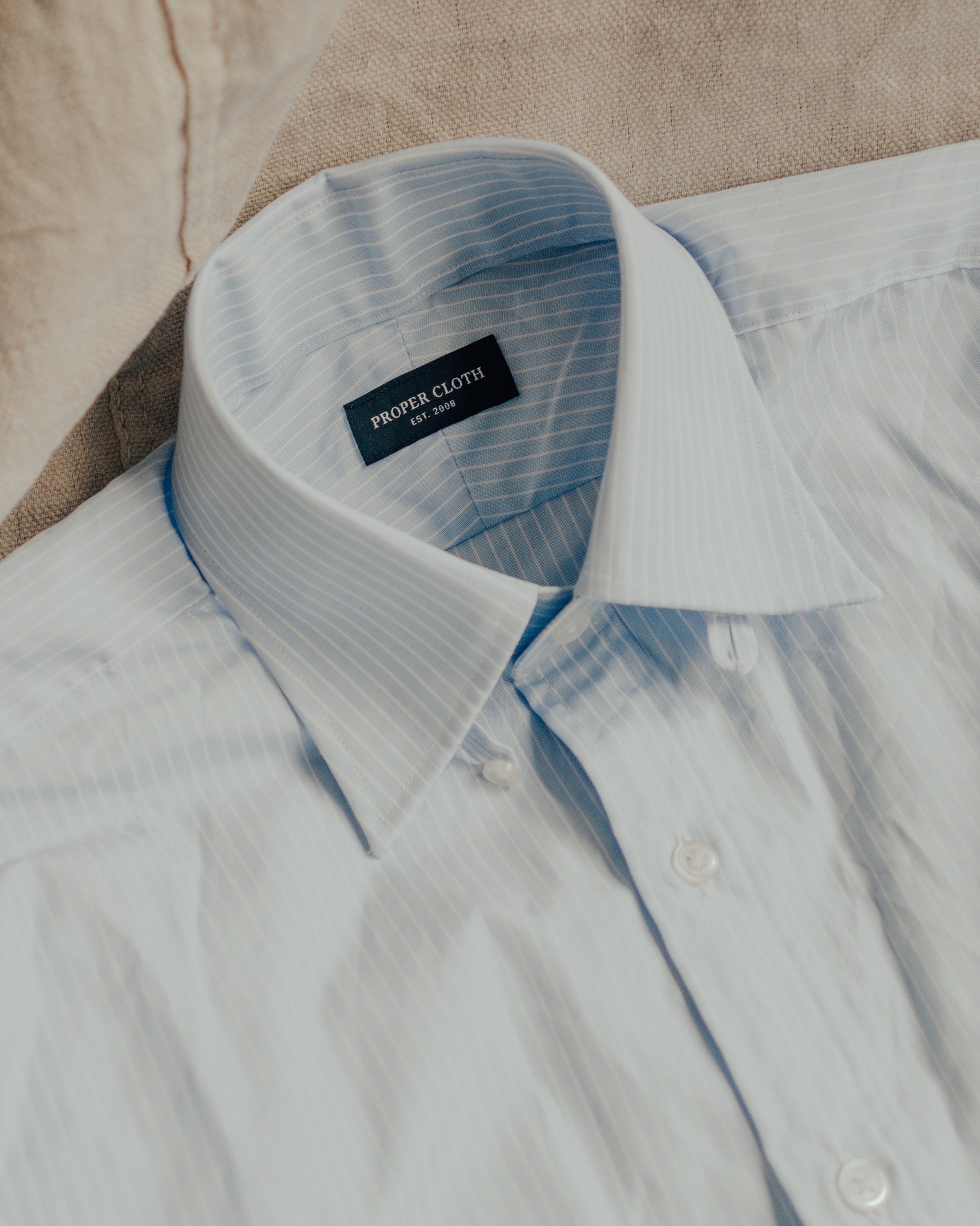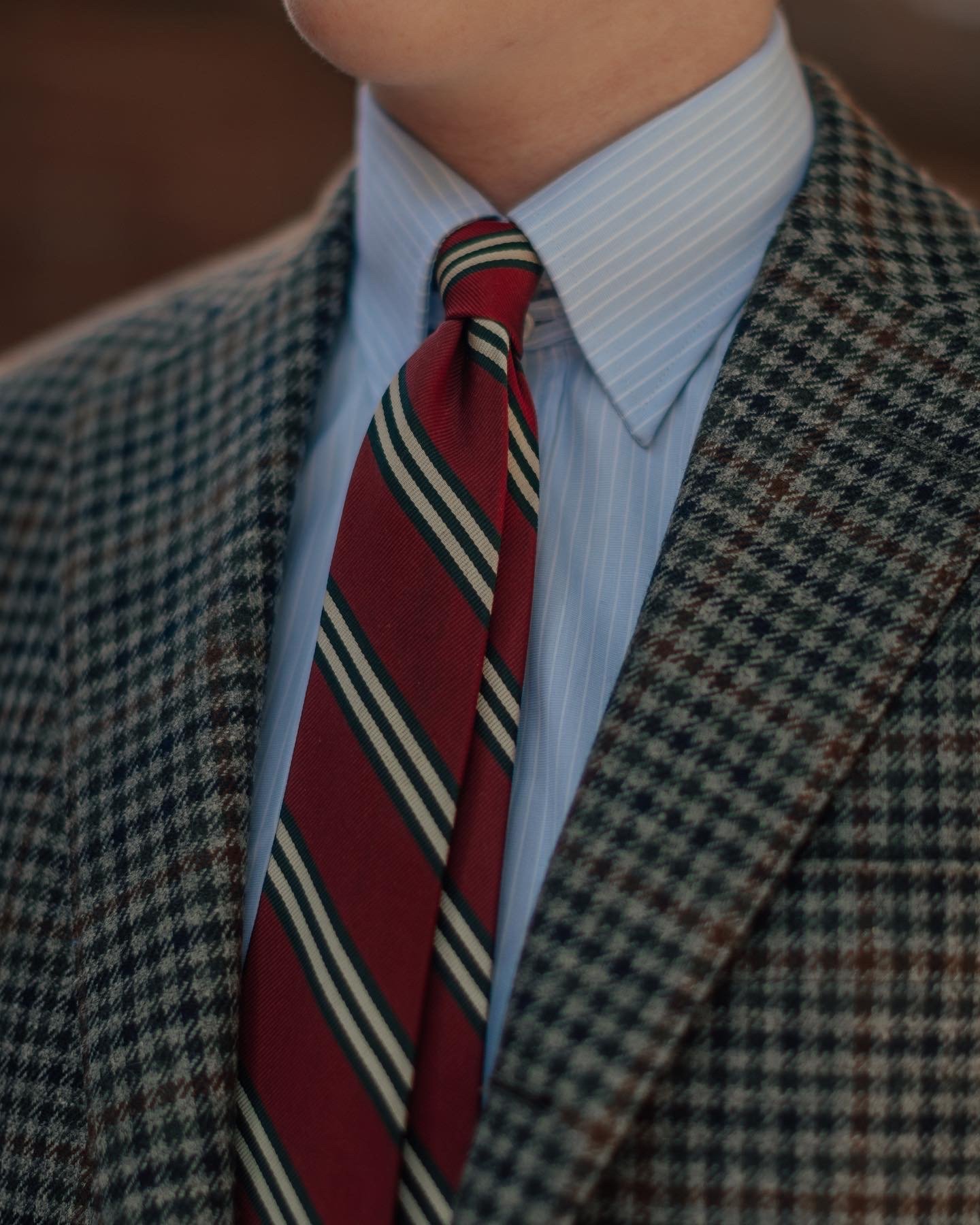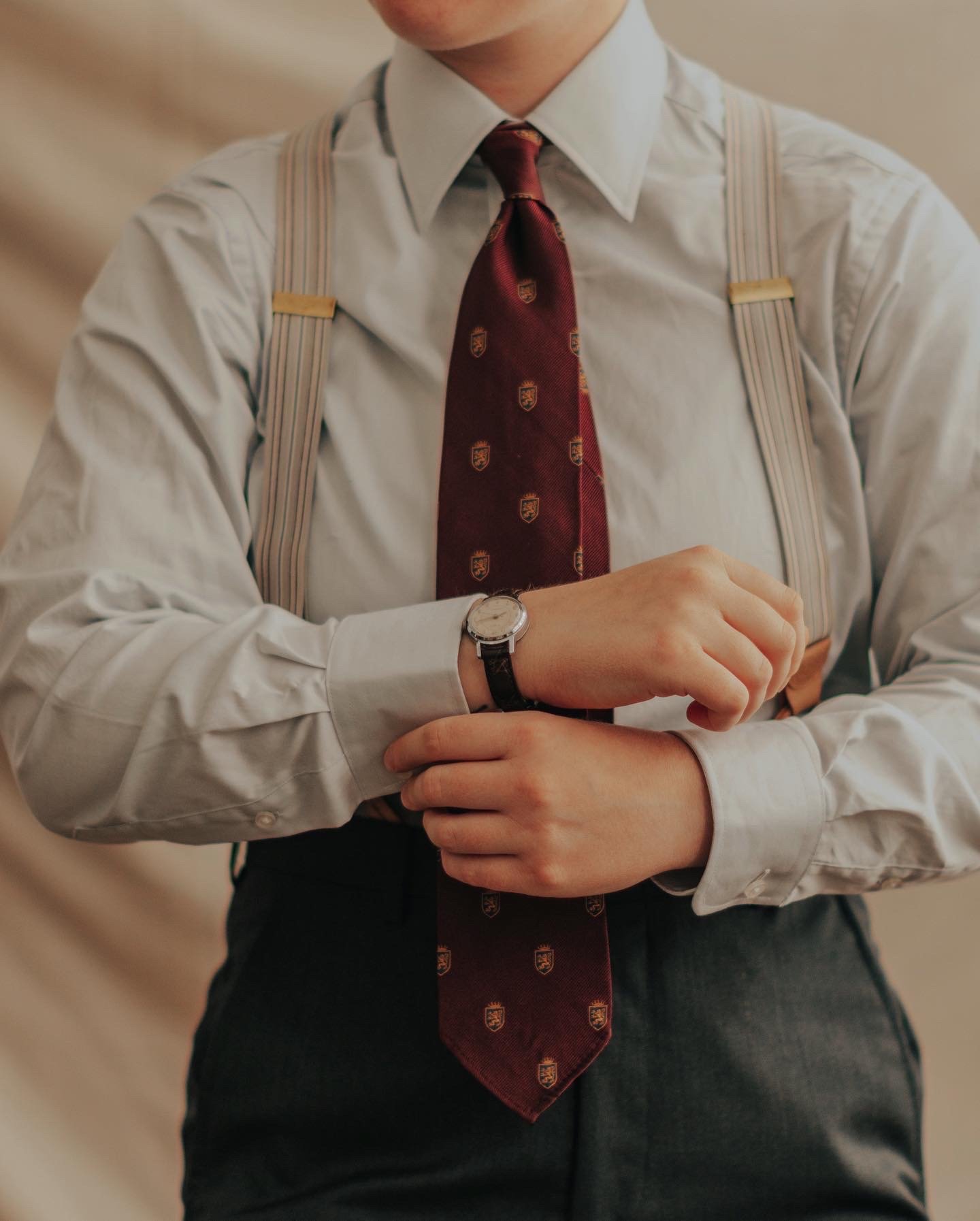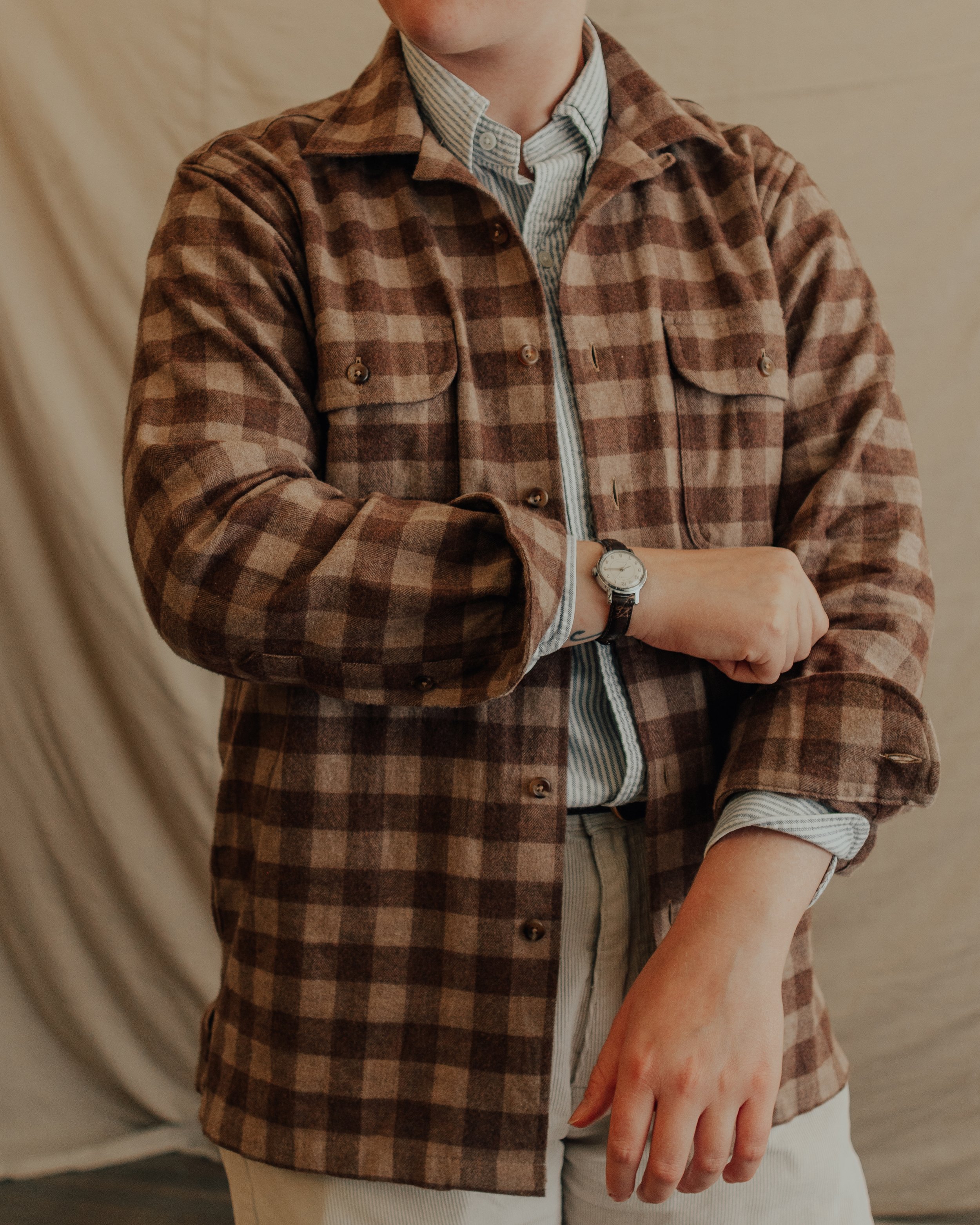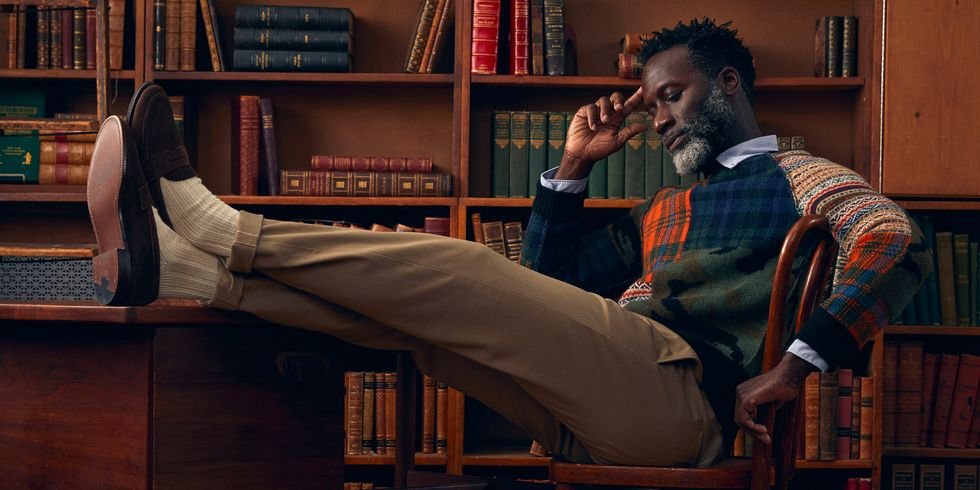Ivy/Preppy Things I Hate
Hate might be too strong a word here, but there are a number of garments within the Ivy and preppy style canons that I dislike, ranging in “hatred” from annoyance to loathing. It makes some sense as to why I have an aversion to a handful of these garments, considering I gravitate pretty strongly to earth tones, heartier fabrics, and British influence, but others really are wild cards and I simply have no explanation for disliking them other than that I just do.
Pastels
Pastels have had a massive foothold in preppy style–and a somewhat smaller presence in Ivy style–for decades. They often appear as GTH (go-to-hell) trousers, but also pop up every now and then in sport coats, shorts, and ties. It isn’t that I feel these colors don’t belong within the goalposts of the two styles, I just think that 90% of the time they look dumb. They’re generally difficult to style because they’re so bold compared to most other pieces in the average person’s wardrobe. Additionally, because they’re bright and act as the focal point of an outfit, if there’s something off about the garment like trouser rise or low button stance, it throws something already off balance even further out of whack since your eye is drawn to it.
Hate this—Trix Yogurt vibe
There are instances where I like pastels. They’ve been around long before their 80’s boom, and I generally enjoy them when used in true vintage fashion. Contrary to what the non-sartorial public might think, menswear during the late 19th and early 20th century wasn’t all grey, brown, and navy suits. Pastel-striped shirts were popular and lots of summer and resort wear incorporated the colors–think Great Gatsby.
Love this | Dandy Wellington by Julia Bahlsen
Gingham Shirts
Loathe them. I really can’t pinpoint why, but I just can’t stand them. We all know they’re part of the Midtown finance bro uniform, but I don’t think my disdain stems from that connotation–it definitely doesn’t help, though. I’ve also noticed that it doesn’t matter what scale or color the gingham is, there’s just something about it I can’t get past. There are moments where I see a navy, mid-scale gingham shirt used in a great outfit, but instead of lightening up on my dislike of the pattern, I just end up thinking the already-solid ensemble would look even better with something like a tattersall or striped shirt instead.
Picnic blanket
Madras
Madras falls on the mild annoyance side of the spectrum because my opinion really depends on the colors and pattern. I like muted madras–I own a blue tea stained madras sport coat and a red/olive madras popover shirt. Where I waive into feeling “meh” about the fabric is when there’s too much going on. I don’t love patch madras, nor do I like a mix of bright colors. There’s also something about a madras tie that feels like a cheap party gag to me (same with tartan ties).
I do appreciate the rich history of the fabric and the craftsmanship in hand-weaving the textile. There’s so much fun lore behind the accidental “bleeding” madras of Brooks Brothers and the weird but lovely universal experience that millennials and gen z share with having worn madras bermuda shorts as children. I feel like it’s one of those “love to hate” kind of things.
I like the muted, cohesive tones in this sport coat
Ribbon Belts
My main draw to Ivy style is the effortless look of it. I think the aesthetic looks best when it has a light and airy, lived-in vibe with elegant proportions and drape. Achieving that vibe is more difficult than it sounds, and each piece you incorporate into an outfit can make or break the whole aura. The ribbon belt shatters it entirely. Even if everything else in an outfit is perfect, the thick metal hardware, floppy construction, and horizontal stripes typical of a ribbon belt bring the whole vibe down. Your attention is drawn directly towards it, and it makes everything look a bit clunky and disheveled, especially if it bisects the body at a disproportionate point visually.
Nice shirt, nice trousers, horrendous belt
Two-Button Cuffs
Another one for the “meh” side of the spectrum. A two-button cuff isn’t a dealbreaker for me, but I do think the spacing of a traditional Ivy style two-button cuff looks awkward. Even with minimal spacing, I think two buttons look flimsy. There’s also something about the consistency between a 3/2 front closure and three-button cuff that calms some part of my brain and makes more visual sense.
The spacing is just a bit weird
None of this is to say I’ll dislike these things indefinitely. There’s a whole graveyard full of things I insisted I hated: argyle, batik, windowpane sport coats, camp mocs, etc. Who knows if my dislike faded from more exposure to these things or because my taste developed a bit more (or declined a bit more?); I just try to be open to the possibility that someday I might come around to certain things I’m currently averse to. I think that’s a good mindset to have when approaching an aesthetic as weirdly specific as Ivy and preppy. Far too often, I see people piece together an outfit using a checklist mentality where everything technically fits within the aesthetic, but they don’t work together cohesively. That’s where taste comes in, and that’s where I think it’s healthy to have a bit of hatred.
5 Essential Ivy Style Shirts
Ivy style in its canonical, heyday form pretty much revolves around a checklist of hyper-specific garments that function as a capsule wardrobe, and if there’s one thing I’d place at the top of that checklist, it would be the oxford cloth button-down (OCBD) shirt. Shirting is–in my opinion–the keystone of an outfit, and when it comes to Ivy style, a lot of people subscribe to the idea that the shirting “category” begins and ends with the OCBD. However, if you dig a bit deeper into the history of the aesthetic and the time periods of the 50s and 60s, you’ll discover there are a couple additional options out there.
1. The Button-Down Shirt
Like I said, I’d point to the OCBD as item number one on the Ivy style checklist, so I think it’s only right to start this outline of Ivy shirting with the button-down. There’s a lot of debate about when exactly this shirt style was first introduced, but most people agree it came about during the 19th century when polo players in the UK added buttons to their shirt collars to keep them from flapping around during matches.
The lore behind the shirt making its way to the U.S. points to Brooks Brothers introducing it to their garment offerings around 1900 when the company began to gain prominence with their off-the-rack tailored clothing. The style can now be found in just about any store from H&M to Thom Browne.
There are a ton of opinions surrounding the perfect construction of a button-down shirt, but I personally prefer 3-3.5” collar points, a 6-button placket, single-button barrel cuffs, and the absence of a button on the back of the collar (all it does is mess with a tie). Whether or not I prefer fusing depends on the shirt fabric–I hate it used with oxford cloth, but think it helps broadcloth stand up a bit more.
2. The Tab Collar Shirt
The button-down shirt might be the most iconic shirt style in the Ivy canon, but it isn’t my favorite. That would be the ever elusive tab collar shirt. Similarly to the button-down, the tab collar was invented by the Brits and then migrated over to the US in the early- to mid-20th century. Popular sartorial figures like the Duke of Windsor and James Bond (lots of Bond outfits were influenced by the Duke) popularized the style, though it’s never garnered enough attention to really exist in mainstream menswear, making it very difficult to find.
What makes the tab collar shirt my favorite is that it never fails to produce a clean look. The tab itself, consisting of either a snap- or button-closure, not only secures the tie knot in place and gives it a bit more of a pop, it also keeps the points of the shirt from looking askew and flipping up above the lapels of a suit jacket or sport coat.
3. The Point Collar Shirt
Although the Ivy heyday is pretty strictly the 50s and 60s, the earlier decades of American menswear from the 20s to the 40s also saw Ivy influence in the form of darker sack suits, paired with bluchers, repp ties, and the third essential Ivy shirt–the point collar shirt.
I consider the point collar shirt to be the most conservative of the styles in the Ivy wardrobe, and really only like the look of it when made from solid-color fabric due to its staid roots in the aesthetic. Solid white and blue are the most common colors, but greys and tans also look nice and existed in the heyday as spillover from military uniforms.
Similarly to the button-down shirt, I prefer point collar shirts to feature 3-3.5” collar points, a 6-button placket, single-button barrel cuffs, and, most importantly, for the spread of the collar not to appear too wide.
4. The Club Collar Shirt
The club collar shirt is like the fun, drunk cousin of the point collar shirt. This style dates back a bit further than most of the others on this list to the 19th century. It originated as the uniform collar worn by boys attending Eton College in England, and became popular in the US around 1900.
This style of shirt typically, but not exclusively, features a contrasting white collar against either solid or patterned (usually striped) fabric. Due to the playful nature of the rounded collar points and contrast collar, this shirt style aligns more closely with dandiness and the preppy go-to-hell (GTH) look than with the stoic vibes associated with the point collar shirt.
The spread of the club collar can really vary from brand to brand. Less distance between the two “points” works well for the inclusion of a collar pin, but I think a wider spread has its pros too in that it flows nicely into a jacket’s lapels.
5. The Camp Collar Shirt
The most casual shirt style on this list is the camp collar shirt. I’m sure Ivy sticklers will disagree with me on including this style, but I think it has a solid standing–to a point–in the aesthetic. The camp collar shirt is somewhat of an outlier when compared to the others on this list because it originated not in the UK or US, but in Cuba.
I have very narrow goalposts when it comes to including the camp collar in Ivy style. I consider it Ivy only in the context of it having been worn as a sport shirt or “vacation” shirt during the 50s and 60s. Pendleton popularized the camp collar in the 60s when the brand’s famous board shirt took off in the mainstream, and other outdoor outfitters followed suit, selling the style on heavier wool shirt jackets.
I think the camp collar is perfect when worn on vacation at the shore in the summer or upstate at a cabin in the winter due to its relaxed nature and versatility across different fabrics and weights. One key detail to look for is the inclusion of a loop closure.
This post is sponsored by Proper Cloth. To learn more about Proper Cloth’s custom shirting and to get 10% off your first order, click here.
What is it Like Being a Woman in Menswear?
I don’t really think I’ll ever hear the end of this question, and to be quite honest I don’t think I’ll ever be satisfied with my answer. There’s so much gravity to these few words that it’s difficult for me to actually wrap my head around truly what it is like to be a woman in menswear; however, I do have a few thoughts and I’ll try my best to articulate them.
First and foremost, I want to emphasize that I have a very unstable relationship with considering myself fully a woman. I’ve struggled to identify myself for a long time in terms of gender and I’ve pretty much come to the current conclusion that if I had to put a label on myself it would be nonbinary. Still, I ultimately prefer to consider myself as “just me.” “Just me” does come with some twists and turns, though, in terms of my lived experiences. I am a pretty masculine-presenting person and the way I look significantly affects how people interact with and perceive me. There are dozens of experiences that I’ve had—both industry-specific and not—that a feminine woman likely wouldn’t and vice versa. Where I do identify with womanhood is in my experiences growing up as a more feminine-presenting person. These two blocks of my life—the masculine-presenting part and the feminine-presenting part—culminate in me falling into a weird place when it comes to working in a male-dominated field.
The way I like to simplify how I’m viewed by some men in the industry and broader enthusiast community is this: I’m not man enough to be 100% a bro but I’m not woman enough to be “desirable,” so I’m often subject to a lot of “locker room talk” while also being left out of the boys’ club. This isn’t a unique experience and certainly isn’t menswear-specific, but it is a solid part of what it’s like to be a non-cis man in this sphere. Speaking of “locker room talk,” those conversations do in fact happen and, if you’re a feminine woman in menswear, there’s a good chance that you’ve experienced being objectified. You’ve also probably had to make space for yourself, and by “make space” I mean you have had to announce your presence and competence when men’s competence is just assumed. You’ve likely been subjected to answering “no” to questions like “Are you someone’s girlfriend?” while attending an industry event. Or, you’ve had to push to be recognized beyond the cap of being just the best dressed woman in menswear to being the best dressed person in menswear. It’s as if you have to prove that you have a right to exist in menswear spaces as an equal when men just have to show up. To be fair, the industry and community do primarily revolve around men, but we’ve had a woman win American Menswear Designer of the Year the past two years so it’s really not a shocking concept for women to have an interest in the industry and community. There are also sexist—yes, sexist—tendencies that extend beyond the opportunities that women may or may not receive within the industry.
The boys’ club culture is pretty strong, even where it might not seem like it is. Everyone, even the most in-touch, has unconscious biases they pick up from society. The most concerning trend I’ve witnessed is the rise of very influential figures who post without self-reflection and proliferate biases rooted in misogyny. This leads to a continuation of an unconscious mentality in which only those who are already the mainstream (men) are the experts, while non-men hit a glass ceiling of existence as experts only in their own lane. A prime example of this lack of recognition and consideration for the experiences of non-men in authoritative discourse is a conversation I participated in regarding the ability to shield oneself from challenge and criticism. It is pretty easy to exist in the menswear space as a cis man wearing classic, “non-offensive” clothing and to coast through the community, industry, and general society without systemically harmful commentary resulting directly from gender identity and expression. Yes, there are the “You look like Winston Churchill” comments, but women and non-men receive that reaction and more. As a woman or non-man, you don’t have the societal recognition as a man to hide behind and you will be challenged and criticized beyond the superficial “Are you auditioning for Newsies?” commentary. I’ve been called various slurs and received pretty horrible comments both online and in real life for simply wearing the clothes that I enjoy and existing as I am—an experience that cis men will never truly have. The absence of this specific experience and more is what continues the cycle of the boys’ club echo chamber of exclusivity in menswear, continuing to privilege men’s opinions above all despite the existence and prominence of non-cis men in this sphere. The cycle spirals due to regular influxes of new enthusiasts who are exposed to and absorb these norms.
It’s not a new concept that fans of menswear seek advice from and idolize specific people or platforms that appear authoritative in their interpretations and notions of what is good or bad or trendy or flattering or bricked. A large percentage of these people are young, self-conscious, and/or impressionable, and they emulate more than just wearing grey New Balance’s with OG-107’s. There are podcasts that have bro-ified the idea of men being into fashion, and Discords and Reddit threads have built and maintained echo chambers for biases to thrive without great challenge. This kind of “chronically online” archetype has become the standard introduction to and pinnacle source of knowledge on menswear (and subsequently general life advice) for people wanting to enter the dialogue even though 9 times out of 10 it isn’t truly the best, all-things-considered resource.
Still, one of the greatest things currently about being a non-cis man in this industry and community is that the multitudes of concepts, opinions, and perspectives that have gone untapped due to a difference in lived experiences between men, women, and nonbinary people are finally entering the dialogue. We’re at a point where these new perspectives are significantly changing the way we all view menswear, as well as its accessibility. More and more campaigns for traditional menswear brands are now including women and queer models and voices. There is also a general acceptance and support among people in the broader menswear industry for these new perspectives to proliferate, and even the niche classic and trad groups are moving in the direction of branching beyond their comfort zones. I personally would love to see more women and non-cis men acting as upper-level decision-makers within the industry and authorities within enthusiast community, but I’m alright taking everything one small step at a time… for now.
Are Collabs Ivy?
Wow. It’s been an interesting week for Ivy, to say the least—and it’s only Tuesday. If you’re unfamiliar with the Ivy style crowd, let me catch you up. J. Press is one of the larger names in this very traditional genre of clothing, and they announced this week that they’re launching a collaboration with the not-so-traditional Todd Snyder. To the average person, this doesn’t seem like huge news, but to those passionate about the style, it’s been the talk of the metaphorical town.
The reason why this is so big is because to many, it appears to be the beginning of the end for one of the few enduring brands that really has a history and stronghold with the style. The flashiness of Todd Snyder isn’t something traditional and it definitely isn’t something that falls within the strict guidelines of Ivy style. Many see it as a gaudy attempt at attracting a younger consumer base, a lackluster follow-up to L. L. Bean’s successful collaboration with TS earlier this year, or both.
Responding to that first bit of criticism, I’d simply say that brands are allowed to step out of their comfort zone every now and then. If they didn’t, the world would be such a boringly-dressed place. I’d feel like I was back in high school surrounded by people all wearing the same uniforms. There is something to be said about what makes a collaboration good and how that really boils down to merging the authentic pieces of the collaborators. Did J. Press succeed in doing that? We’ll see. It’s pretty bold to make any assumptions after only seeing three photos of the collab. Regardless, there has been an ongoing discussion about how to reel younger people into the style for a looooooong time now. And what, the second a brand takes a stab at that, suddenly everyone throws a fit? Do you want young people or not? Because they certainly don’t have the energy or desire to step into a community that criticizes any kind of sartorial nuances. Whether this specific collab was the right path to take is irrelevant in my opinion. The most important thing to me is that a heavy hitter in this genre is trying. That’s far better than sitting around waiting to die out.
The second criticism really bugs me. If you’re going to sit behind a screen, type out that this is nothing more than a copy of L. L. Bean, and you don’t work in the clothing industry, then I’m sorry but I’m tuning you out. Things like this take months, if not over a year of planning. You can’t just throw something together and release it two months after witnessing another brand having some success. Especially not after Covid turned supply chains completely on their heads. People in the industry do talk between one another, so I’ll give a little there. Also, if you really look at the TS x L. L. Bean collab, you’ll notice that Todd really benefitted the most. His collaborations are mainly to open his brand up to a wider audience, not the other way around. For that exact reason, it’s a bit baffling to me that anyone would just assume J. Press is the one that pushed for this.
My ADHD and I are rounding back to that point I made earlier that the idea of attracting a younger crowd has been discussed for a while now. I saw someone suggest J. Press should put out a father-son, head-to-toe-J. Press campaign because surely that will get the idea through to younger people that they should think Ivy is cool. Yes, dad jeans have been a fad, but I don’t know of anyone my age who wants to match their parents. I bought a striped shirt from J. Crew once and then came downstairs the next day to find my dad wearing the same one. I never ended up wearing it after that (no offense dad). Ivy is a difficult style to market to younger people, and that is primarily because of the culture and community surrounding it. I’ve been thrilled to have had great experiences with those in the community, but that’s not something everyone can say. There is a deep-rooted high-culture identity surrounding the style that can be incredibly off-putting, and few have been able to break it.
When I first posted to the Ivy Style Facebook group, I did so bracing myself for homophobic, sexist, generally negative feedback, and was shocked when I didn’t receive any. And while I’m elated by that response, that initial uneasy feeling is something I’ve made an effort never to forget. Because that’s how so many younger people feel about the style and those who follow it. The gatekeeping and harshness and militant-like strictness of Ivy is what shuts people out. And you can’t really claim to be open to younger groups until those qualities are broken down. The whole thing won’t just fall apart if you let go a little. The guidelines will still be there, there will just be more room to breathe. And after all, most people simply wear things because they enjoy them. Let them.
A Review: Dehen 1920’s Women’s Collection
If you didn’t know, Dehen 1920 is my favorite brand of all time. I own a number of Heavy Duty Tees as well as a few jackets and have always been impressed with the quality, fits, and history of the brand. My only complaint (honestly, I hesitate to even call it a complaint—maybe just a small nitpick) is that I’m too small to fit perfectly into a size XS in their cardigans and jackets. I always come close, but it’s never perfect. That’s not their fault, though. I have size issues with just about every brand I encounter and that’s because “men’s” clothes aren’t sized and cut with people like me in mind—at least not yet.
This week, though, Dehen changed the game for me. They’ve touched upon the creation of a women’s collection for a while now and I’ve been really curious to see what would come of it. All I can say now looking at it for the first time is: wow. I’ve never seen a menswear-centric heritage brand get a women’s line right (in my opinion) until now.
So, sooooo often, when a brand realizes there’s enough interest to delve into the creation of a women’s collection, they go about it the wrong way. A lot of women (not all, but a good amount) interested in heritage and vintage clothing in the vein of aesthetics Dehen falls under wanting women’s sizes are asking for smaller sizes of the clothing the brand already produces and is known for. Often, though, brands miss this point and instead produce items that are slimmed down with tapers wherever they can fit them and call it a women’s collection.
Dehen is the only brand I know of that hasn’t done this. Instead, they just took a few fan favorites and shrunk down the measurements without drastically changing the original structure of the pieces. They’ve also released a pretty broad range of pieces. Usually, women get like three or four options to pick from when a women’s collection is released, but Dehen’s really produced a wonderful array with a decent amount of variety. I absolutely love the rust-colored Club Jacket and will definitely purchase it when I have the money. Also a cardigan. Probably two.
Perhaps my favorite very subtle detail is that they haven’t touched the buttons. Traditionally, men’s clothing has buttons on the right and women’s has buttons on the left. It’s a small detail, but it’s one I really appreciate as someone who hates when things are gendered for no good reason. I absolutely love this milestone in Dehen’s long history and can’t wait to see where else they go with it!
Top 3 White T-Shirts
The most basic of basics is the white t-shirt, and while it may not seem like it deserves a whole blog post, the white t-shirt goes way beyond the Hanes 6-pack you buy at Target. Materials and production styles differ from brand to brand, so that $80 white t-shirt you criticize for being overpriced may actually be the most high-quality piece in someone’s closet. If you’re someone like me and wear a white t-shirt almost daily, it’s smart to invest in a product that not only looks and feels good, but will also last for years. Quality basics are the building blocks of a timeless wardrobe and these basics begin with the white t-shirt.
I’ve owned dozens of white t-shirts and have found some that I truly love and others that really don’t “spark joy” as Marie Kondo says. Here are my top three:
Dehen 1920 is one of my favorite brands and their Heavy Duty Tee is my go-to for just about every outfit. This jersey knit t-shirt is 100% cotton and has more of a box fit that’s slim enough not to feel like you’re wearing a pillowcase. Made to have workwear-level durability, this shirt isn’t as soft as other fabrics and blends and has some weight to it, but it doesn’t feel too stiff and is light enough to wear in warmer weather. One thing to be mindful of, though, is that the fabric doesn’t stretch much.
Another thing I love about this shirt is its measurements. The sizes that Dehen offers are a huge pro in my book because they offer a range of XS to XXL with measurements that align more with the smaller and tighter cuts of the 1950s. I’m 5’4 and 125lbs with a longer torso and shorter legs and many times, brands that carry a S or even an XS in t-shirts tend to have a cut that’s too long and baggy for my torso and arms.
*Made in the USA!
Jungmaven is best known for their initiative to bring hemp into clothing manufacturing and the Baja Tee is one of their staple pieces. This 7oz, mid-weight t-shirt is 55% hemp and 45% cotton, which makes it a bit heavier than a fully cotton shirt. Jungmaven’s cut is a looser fit that doesn’t bunch around the hips (so, great for a more feminine body!) and has a tailored sleeve that falls mid-bicep. The sizing of the t-shirt is about a half size larger than Dehen’s, but it still falls in a flattering way.
What I love most about this t-shirt is that it feels and looks better with age and is more sustainable than most other clothes due to the inclusion of hemp in its fabric make-up. As someone with a passion for American heritage and its role in clothing manufacturing, I personally really love Jungmaven’s use of the fiber because, as they state on their website, hemp was an American staple up until the 1930s.
*Made in the USA!
What sets this t-shirt apart from Dehen’s and Jungmaven’s is the construction. Whitesville t-shirts are tube knit, which is an older form of construction that requires special looms to create t-shirts without side stitching. Today, these looms are mostly found in Japan, which is where Whitesville t-shirts are made. Due to its unique construction, the fabric quality of this t-shirt is phenomenal. The shirt is super soft and has a decent amount of stretch—enough to move freely but not too much that the shirt could become deformed.
The fit of this t-shirt is tighter and smaller, as per the cuts usually sold in the 1950’s and 1960’s. The sleeves and body length are a bit shorter and the shoulders are narrower than current t-shirt cuts, which may not be ideal for those interested in modern menswear, but is perfect for women seeking a classic look. The construction around the collar includes a double layer of cotton tape for more durability, making for a chunkier collar than other t-shirts, but I personally don’t have a problem with that. My only issue with this t-shirt is that it can feel a bit too bulky when layered under other pieces.


